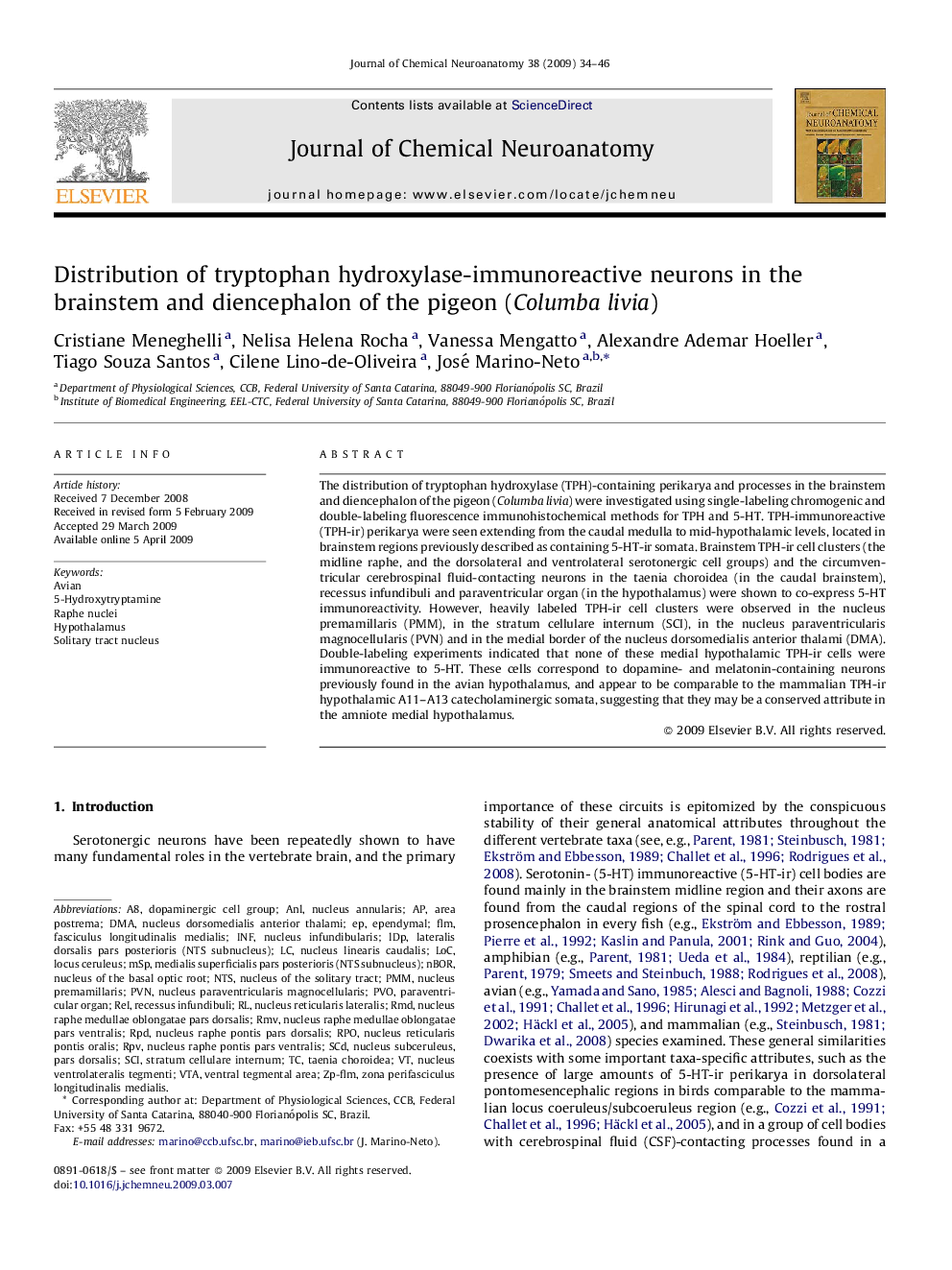| Article ID | Journal | Published Year | Pages | File Type |
|---|---|---|---|---|
| 1989327 | Journal of Chemical Neuroanatomy | 2009 | 13 Pages |
The distribution of tryptophan hydroxylase (TPH)-containing perikarya and processes in the brainstem and diencephalon of the pigeon (Columba livia) were investigated using single-labeling chromogenic and double-labeling fluorescence immunohistochemical methods for TPH and 5-HT. TPH-immunoreactive (TPH-ir) perikarya were seen extending from the caudal medulla to mid-hypothalamic levels, located in brainstem regions previously described as containing 5-HT-ir somata. Brainstem TPH-ir cell clusters (the midline raphe, and the dorsolateral and ventrolateral serotonergic cell groups) and the circumventricular cerebrospinal fluid-contacting neurons in the taenia choroidea (in the caudal brainstem), recessus infundibuli and paraventricular organ (in the hypothalamus) were shown to co-express 5-HT immunoreactivity. However, heavily labeled TPH-ir cell clusters were observed in the nucleus premamillaris (PMM), in the stratum cellulare internum (SCI), in the nucleus paraventricularis magnocellularis (PVN) and in the medial border of the nucleus dorsomedialis anterior thalami (DMA). Double-labeling experiments indicated that none of these medial hypothalamic TPH-ir cells were immunoreactive to 5-HT. These cells correspond to dopamine- and melatonin-containing neurons previously found in the avian hypothalamus, and appear to be comparable to the mammalian TPH-ir hypothalamic A11–A13 catecholaminergic somata, suggesting that they may be a conserved attribute in the amniote medial hypothalamus.
